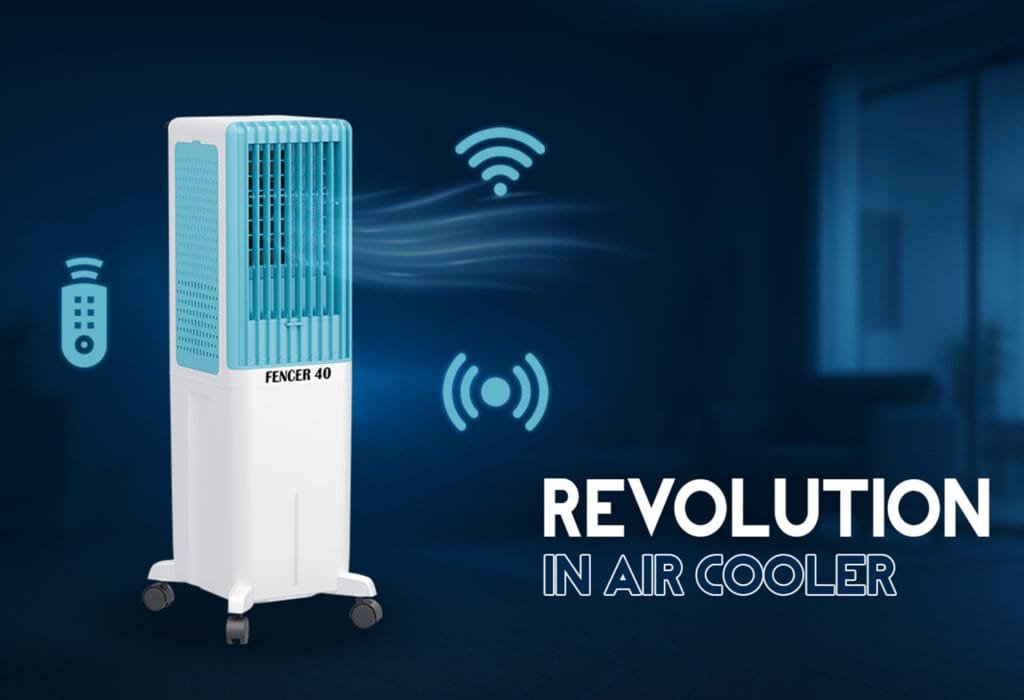For decades, air coolers have been among the most practical and affordable solutions for homes, offices, and industrial spaces. They work on a simple principle pulling in warm air, passing it through water-soaked pads, and releasing cool, moist air into the environment. Yet as cities expand, climates grow unpredictable, and electricity costs soar, users expect much more from their cooling systems. They now demand comfort that adapts automatically, efficiency that saves energy, and technology that anticipates.
This expectation has paved the way for a new generation of air coolers powered by Artificial Intelligence (AI) and smart sensors. These intelligent systems can analyze the environment, learn from user behavior, and adjust themselves to deliver optimal cooling performance. The result is a smarter, greener, and more comfortable cooling experience that marks a major leap forward in air cooling technology.
How Smart Air Coolers Use AI, IoT, and Sensors to Redefine Cooling Efficiency
A smart air cooler combines traditional evaporative cooling with advanced digital technologies like AI, the Internet of Things (IoT), and smart sensors. Unlike conventional coolers that rely on manual settings, smart coolers continuously analyze room conditions and automatically adjust their performance to maintain comfort. They merge mechanical cooling with digital intelligence to offer an entirely new level of efficiency and convenience.
At the core of this transformation are various sensors and microcontrollers that collect and process data. Temperature sensors measure the surrounding heat, prompting the AI system to modify fan speed or water flow. Humidity sensors maintain a comfortable balance of moisture in the air, while occupancy sensors detect human presence and help reduce energy consumption when the room is empty. The inclusion of Wi-Fi modules allows seamless connectivity with smartphones and smart home systems, giving users complete control even when they are away.
Smart Sensors: The Eyes and Ears of Intelligent Coolers
Smart sensors serve as the cooler’s sensory system, enabling it to perceive and respond to environmental changes in real time. They measure factors like temperature, humidity, and even air quality to ensure ideal indoor conditions. This constant feedback enables the system to adapt automatically, providing comfort regardless of how the weather changes outside.
User control has also become more intuitive thanks to sensor and IoT integration. Many modern coolers can be operated through mobile applications or linked to voice assistants such as Alexa and Google Home. You can adjust settings, check water levels, or monitor performance from anywhere, making the experience both convenient and futuristic.
Safety is another major benefit. Features such as automatic shutoff during low water levels, overheat protection, and motor load sensors make these coolers reliable and secure. Some models even include automatic water refilling and tank-level indicators, ensuring uninterrupted cooling without manual intervention.
Connectivity and Integration with Smart Home Ecosystems
Today’s air coolers are no longer standalone devices. they form part of a broader smart home ecosystem. Through IoT technology, they can communicate with other connected appliances such as thermostats, fans, and lighting systems. For example, if the thermostat detects that the room temperature has reached the desired level, it can signal the cooler to reduce speed, ensuring balanced cooling and energy savings.
Cloud-based monitoring adds another layer of intelligence. Users can view detailed reports about energy usage, temperature trends, and performance analytics. In commercial or industrial setups, multiple coolers can be linked to a central dashboard, allowing for remote monitoring and maintenance. This level of control enhances both convenience and operational efficiency.
Environmental and Economic Advantages
The integration of AI and smart sensors brings not only comfort but also measurable benefits to the environment and the economy. Smart coolers are designed to optimize power consumption by adjusting performance based on real-time data, leading to significant energy savings compared to traditional models.
Water conservation is another major advantage. Smart systems refill only when necessary, reducing wastage in regions where water scarcity is a concern. Predictive maintenance further contributes to sustainability by ensuring timely repairs, reducing waste, and extending the life of components.
These systems also have a positive impact on the environment by lowering carbon emissions. By combining energy-efficient motors, smart sensors, and recyclable materials, they help users cool their surroundings responsibly without compromising on comfort.
Industrial and Commercial Applications
While smart air coolers have gained popularity in homes, their true impact is being realized in industrial and commercial environments. Factories, warehouses, event halls, and large commercial complexes often struggle with uneven cooling and high energy costs. AI-powered cooling systems can analyze temperature patterns across a facility and automatically balance airflow for optimal performance.
Centralized IoT dashboards allow facility managers to monitor multiple cooling units from one interface, track system health, and make data-driven adjustments in real time. In manufacturing and logistics centers, where maintaining a consistent temperature is critical, this technology provides both operational efficiency and comfort.
Predictive alerts also revolutionize maintenance. By studying historical performance data, AI can predict when a pump or motor might need attention, allowing maintenance teams to act before a failure occurs. This proactive approach minimizes downtime, improves productivity, and reduces unnecessary expenses.
The Future of Cooling Technology
The fusion of Artificial Intelligence and the Internet of Things, often referred to as AIoT, is shaping the future of climate control systems. Future air coolers will go beyond automation to deliver hyper-personalized comfort. They may recognize individual users through voice, smartphone proximity, or behavioral patterns, automatically adjusting the cooling output based on preferences and environmental factors.
The next evolution will also see the widespread use of AI-controlled BLDC (Brushless DC) motors. These motors, when combined with adaptive algorithms, can deliver precise airflow control, lower noise levels, and substantial energy savings. Additionally, as data analytics become more advanced, manufacturers and engineers will be able to design coolers that perform optimally in different climates adapting their behavior for dry, humid, or coastal regions.
Ultimately, the cooling systems of the future will not just respond to commands; they will anticipate needs, self-optimize for efficiency, and operate with minimal environmental impact. This convergence of intelligence and sustainability will redefine what comfort means in modern living.
Conclusion
AI and smart sensors have transformed the humble air cooler into a powerful, intelligent companion for modern life. From adaptive airflow and predictive maintenance to energy optimization and connectivity, these innovations have made cooling smarter, safer, and more sustainable.
As technology continues to evolve, the future promises systems that learn, predict, and respond faster than ever before. The age of intelligent cooling has begun one where comfort and sustainability coexist, and where staying cool no longer means wasting energy. This revolution, driven by advancements that companies like Raj Cooling Systems embrace and refine, will continue to shape how we live, work, and experience comfort in the years to come.

